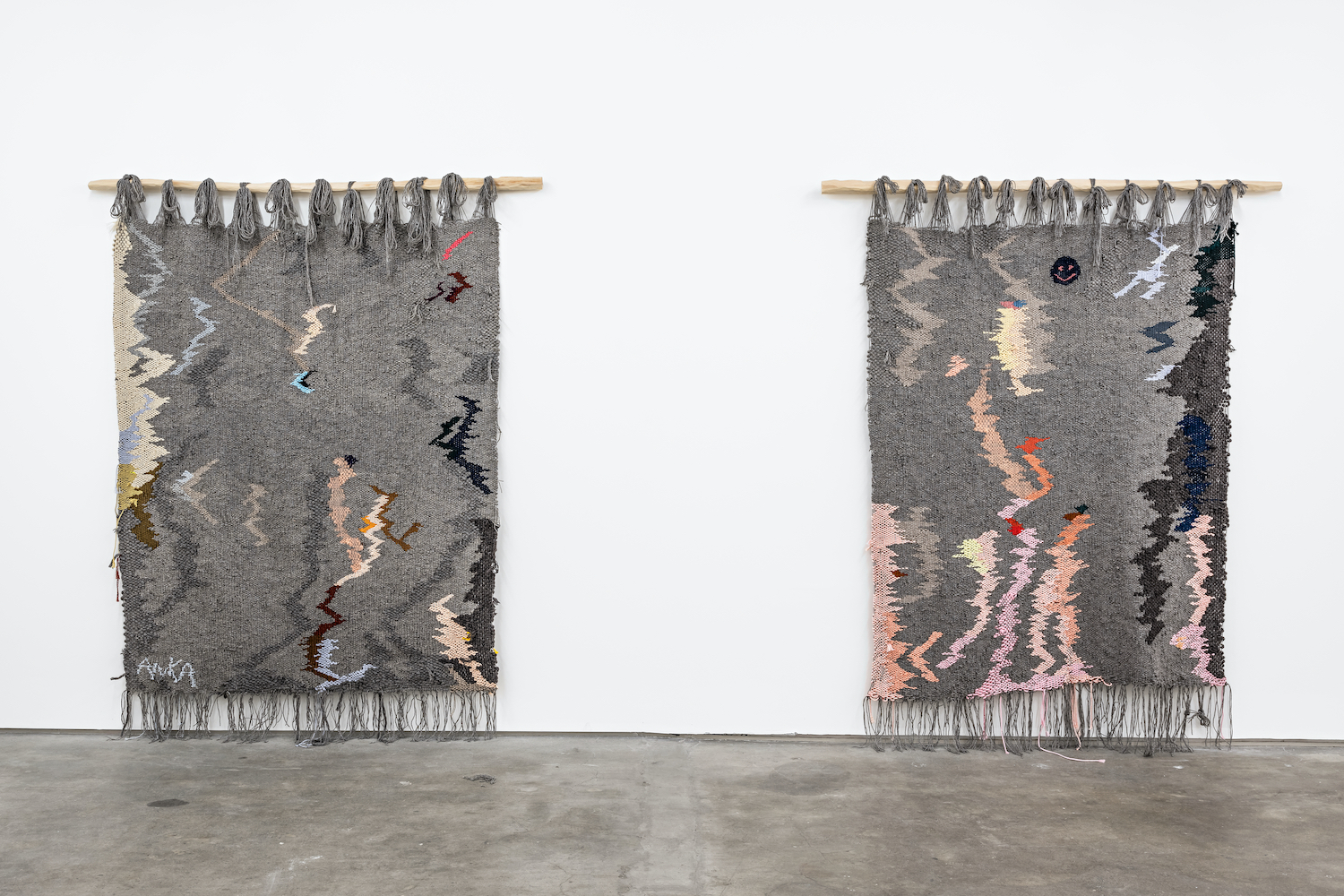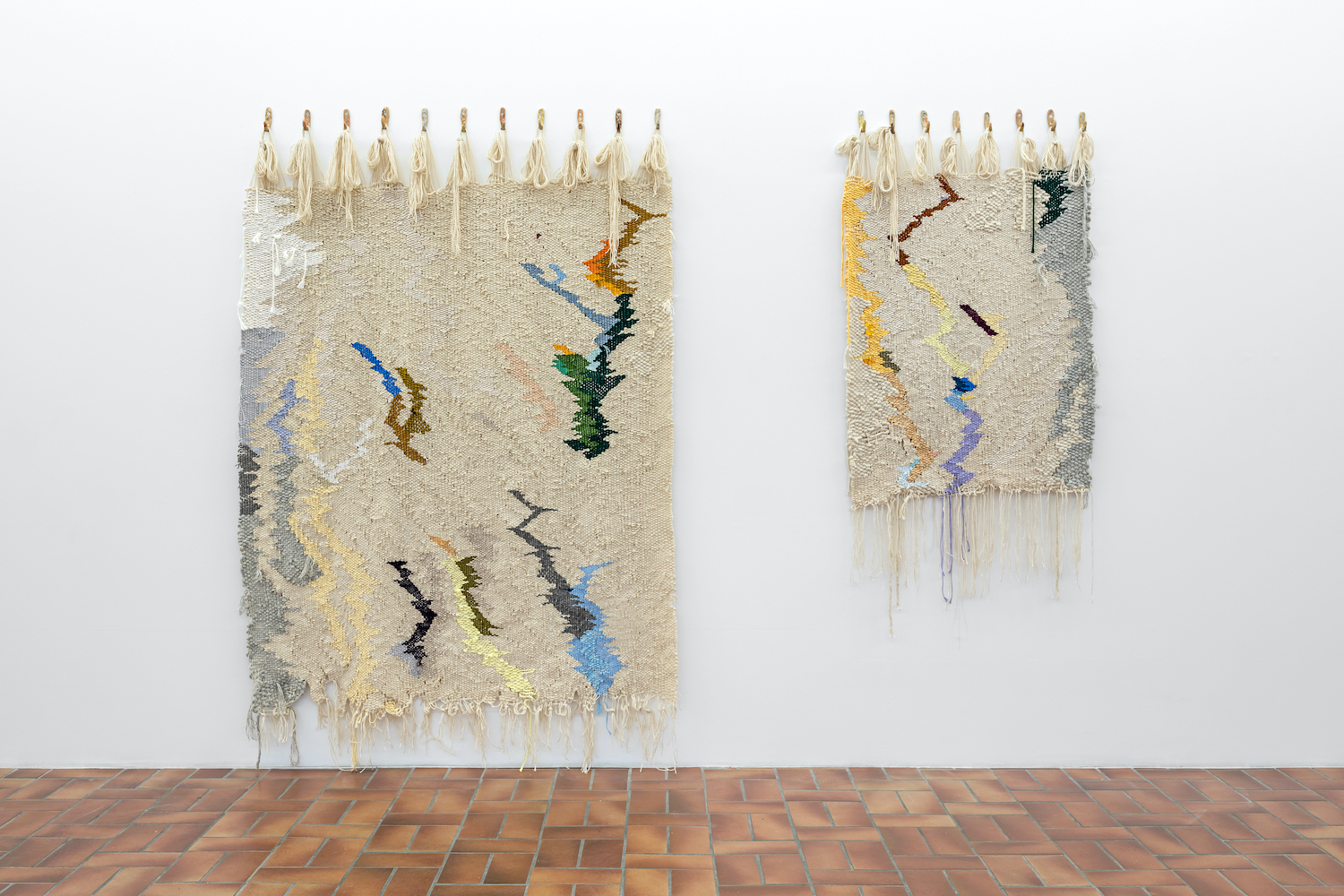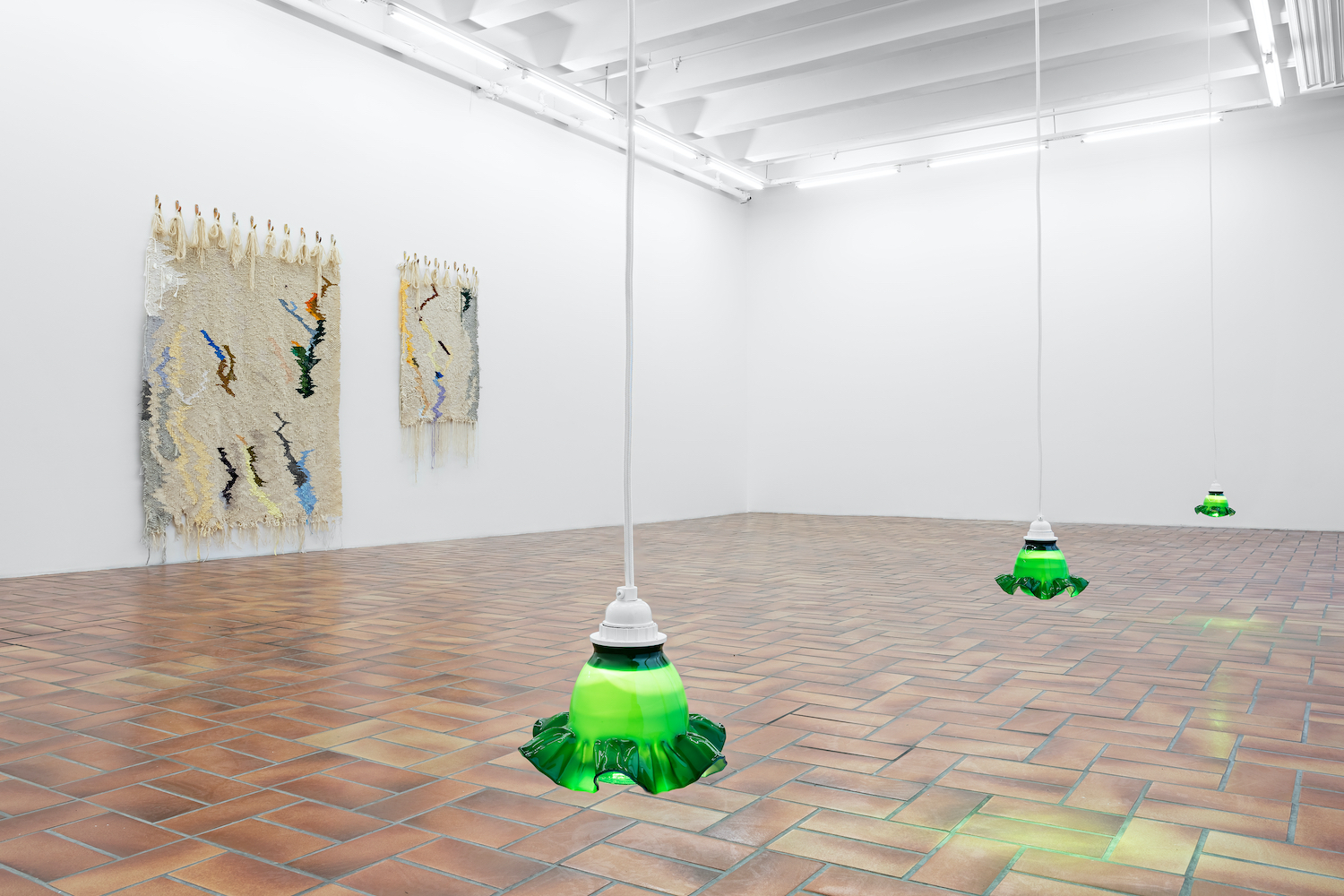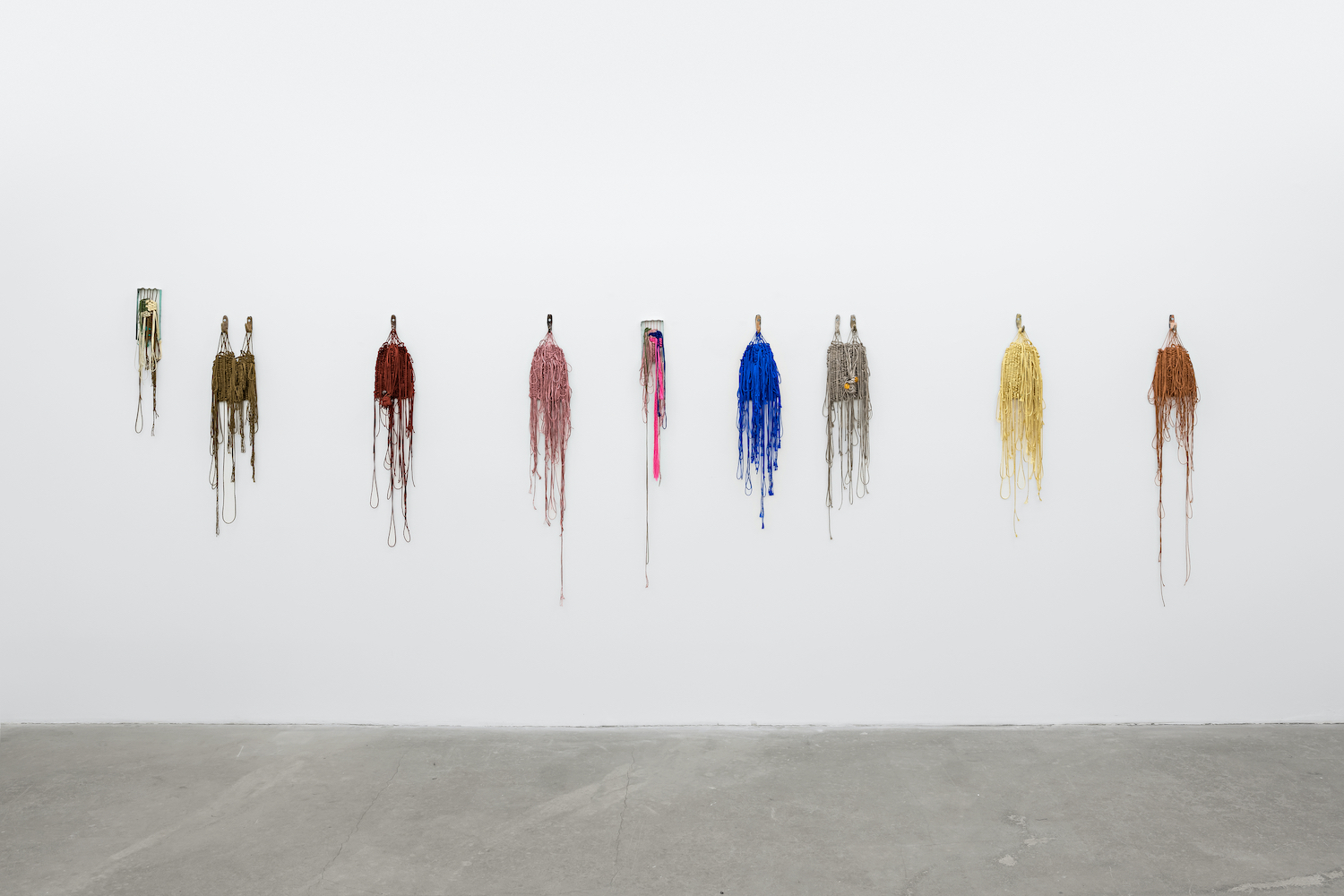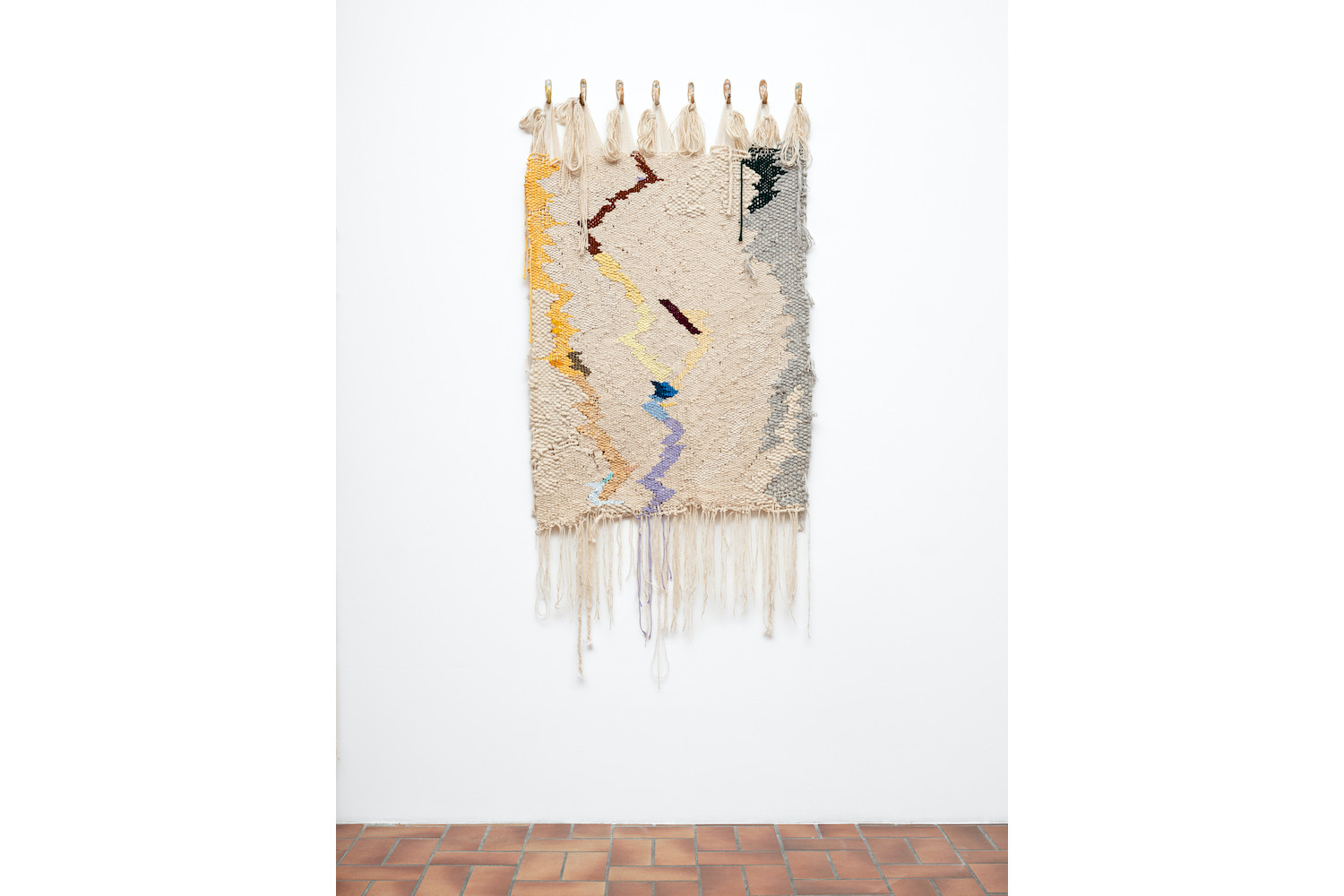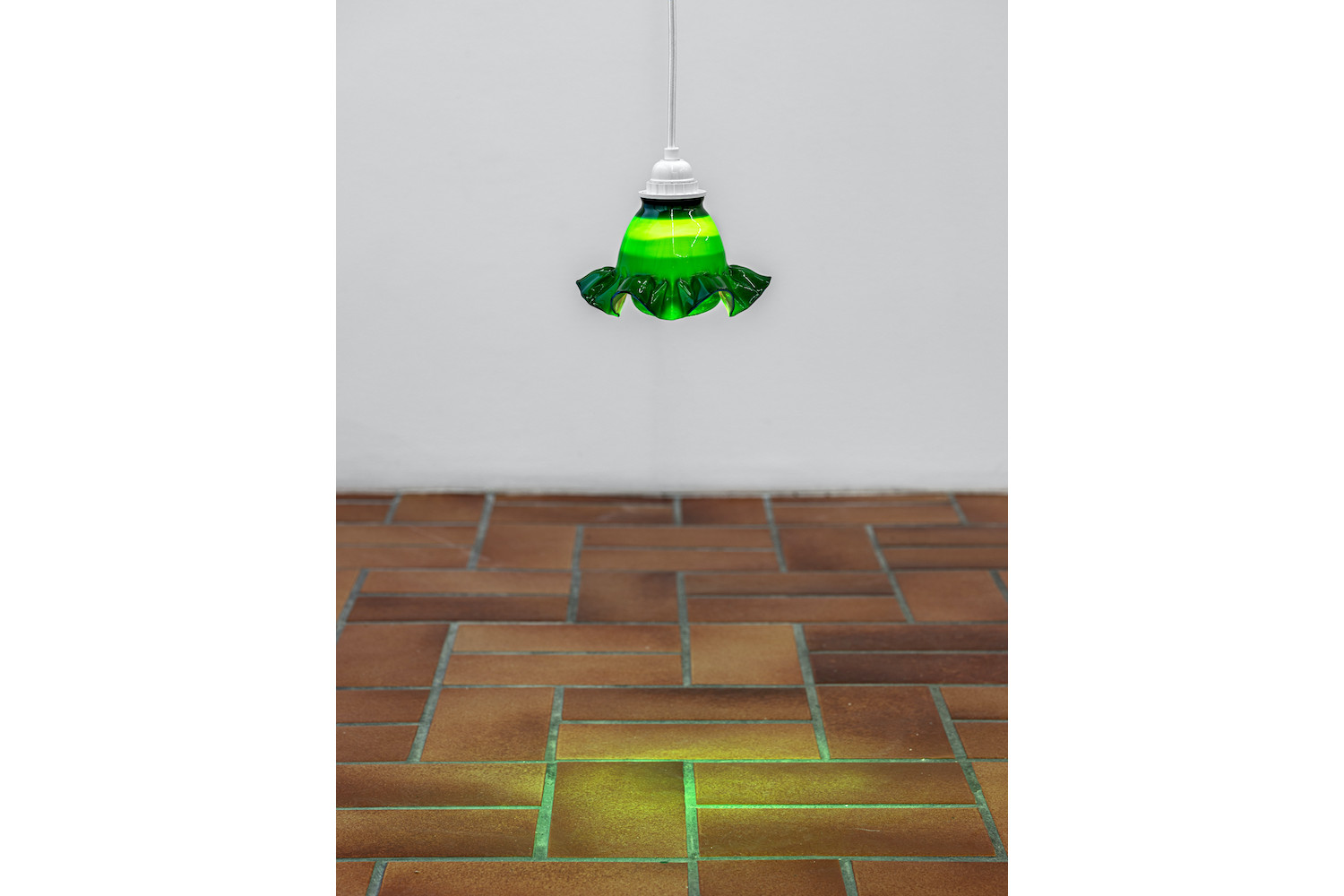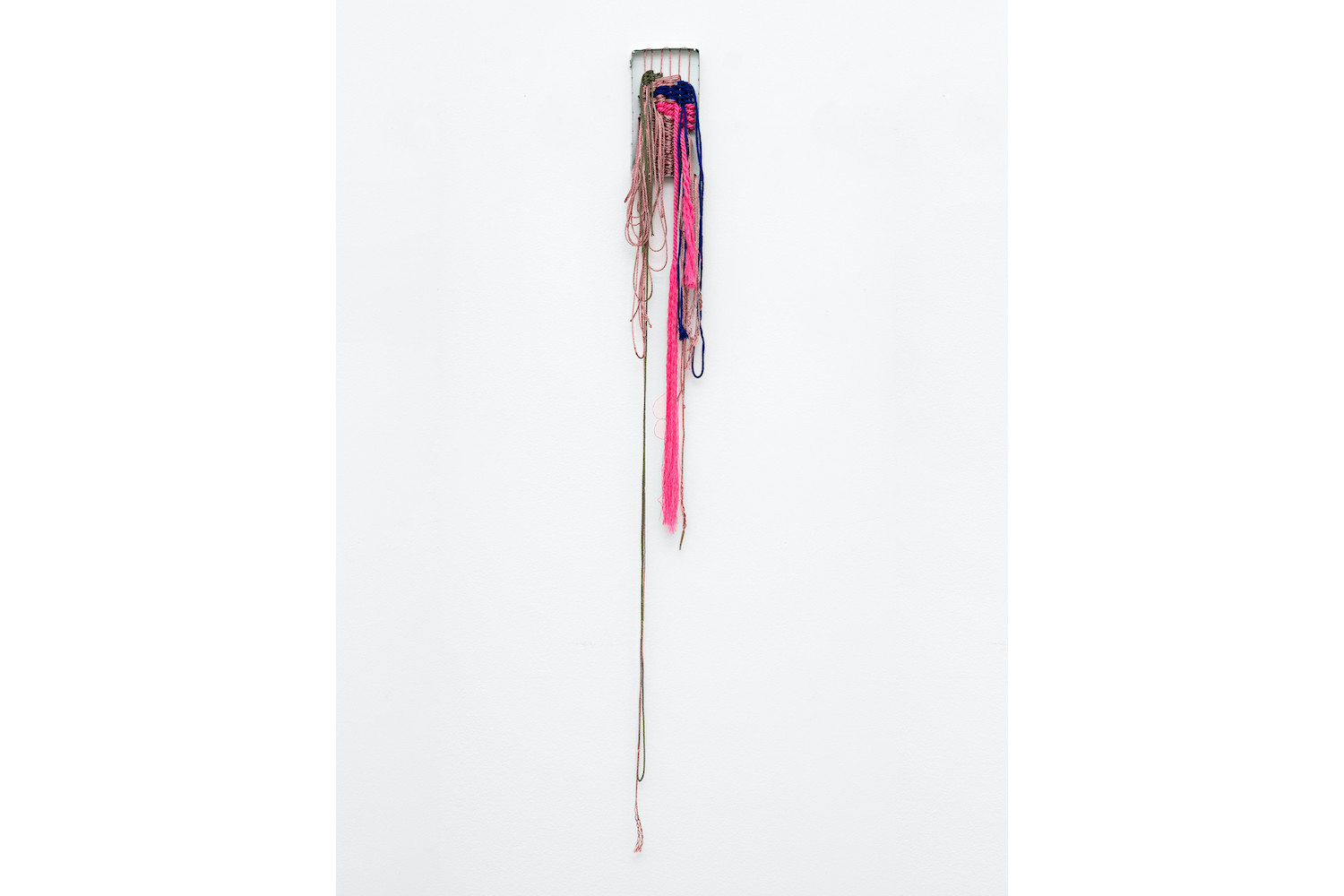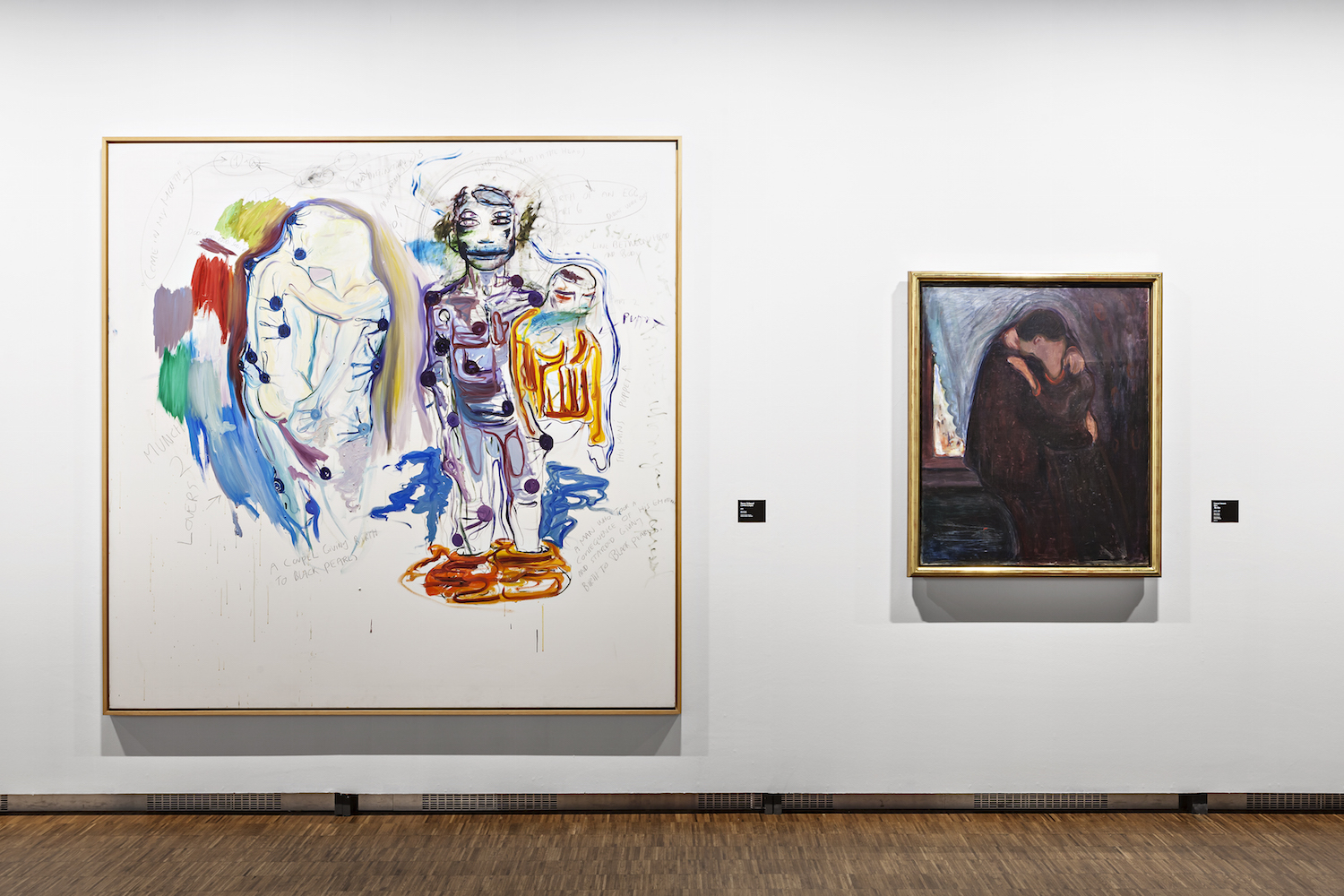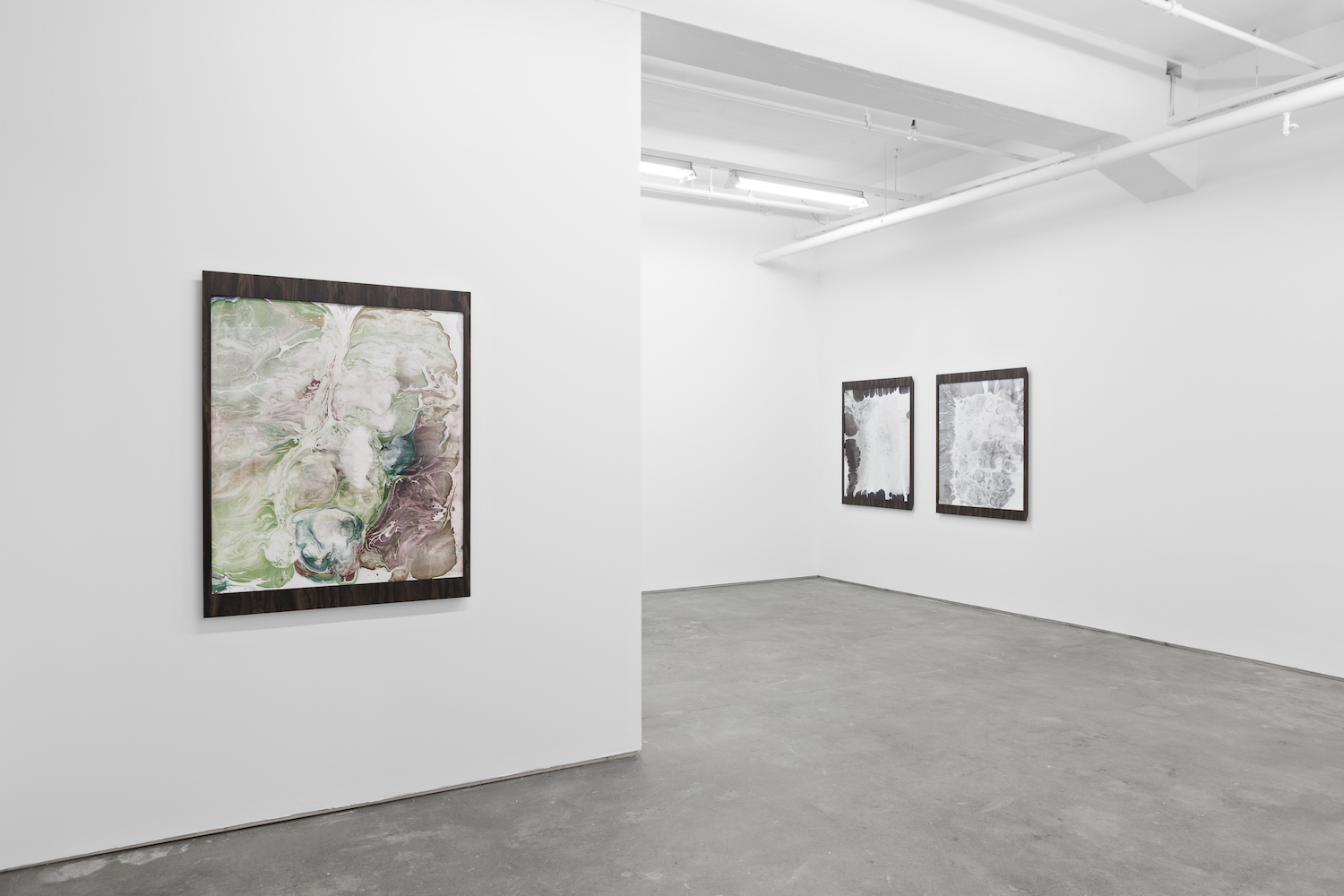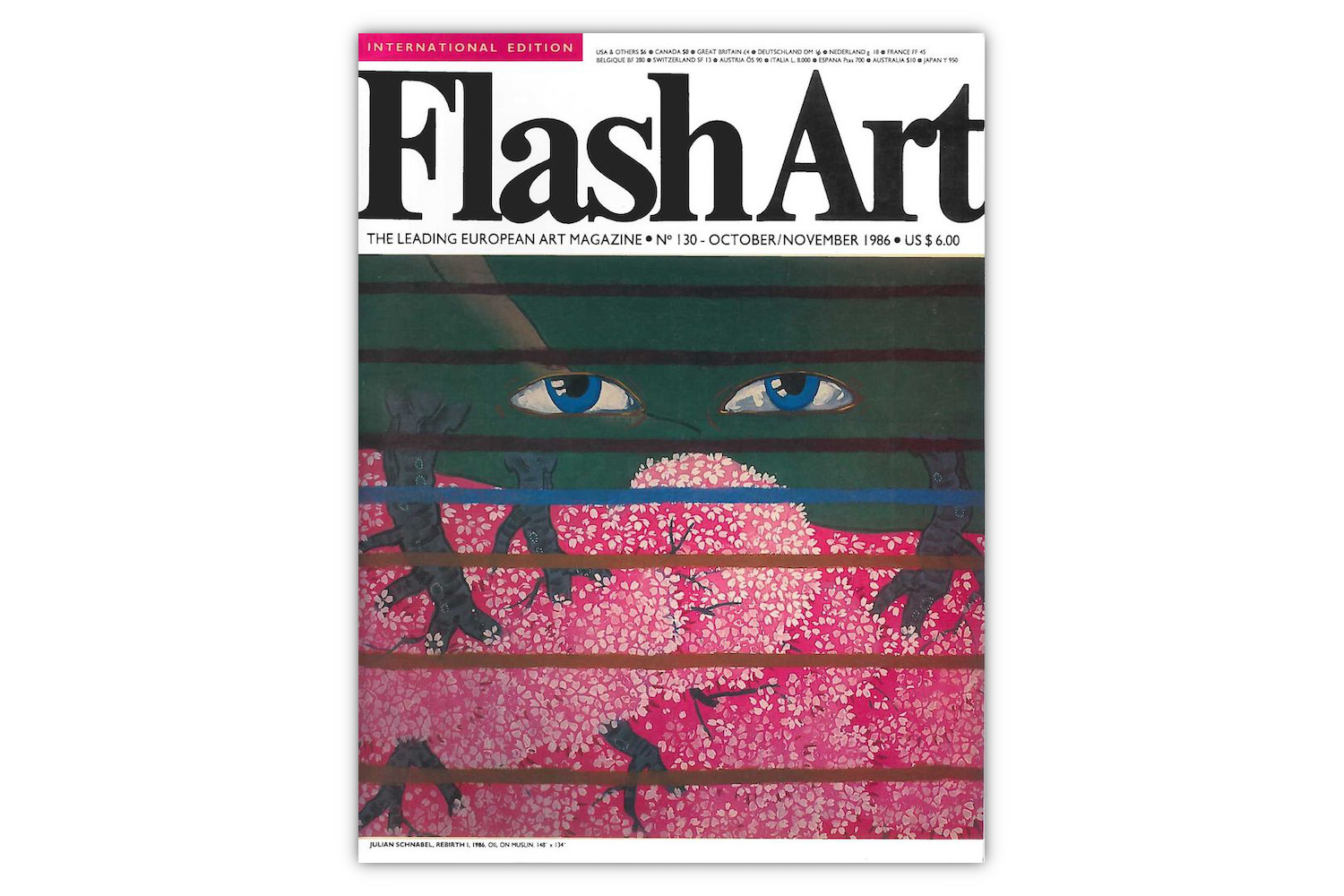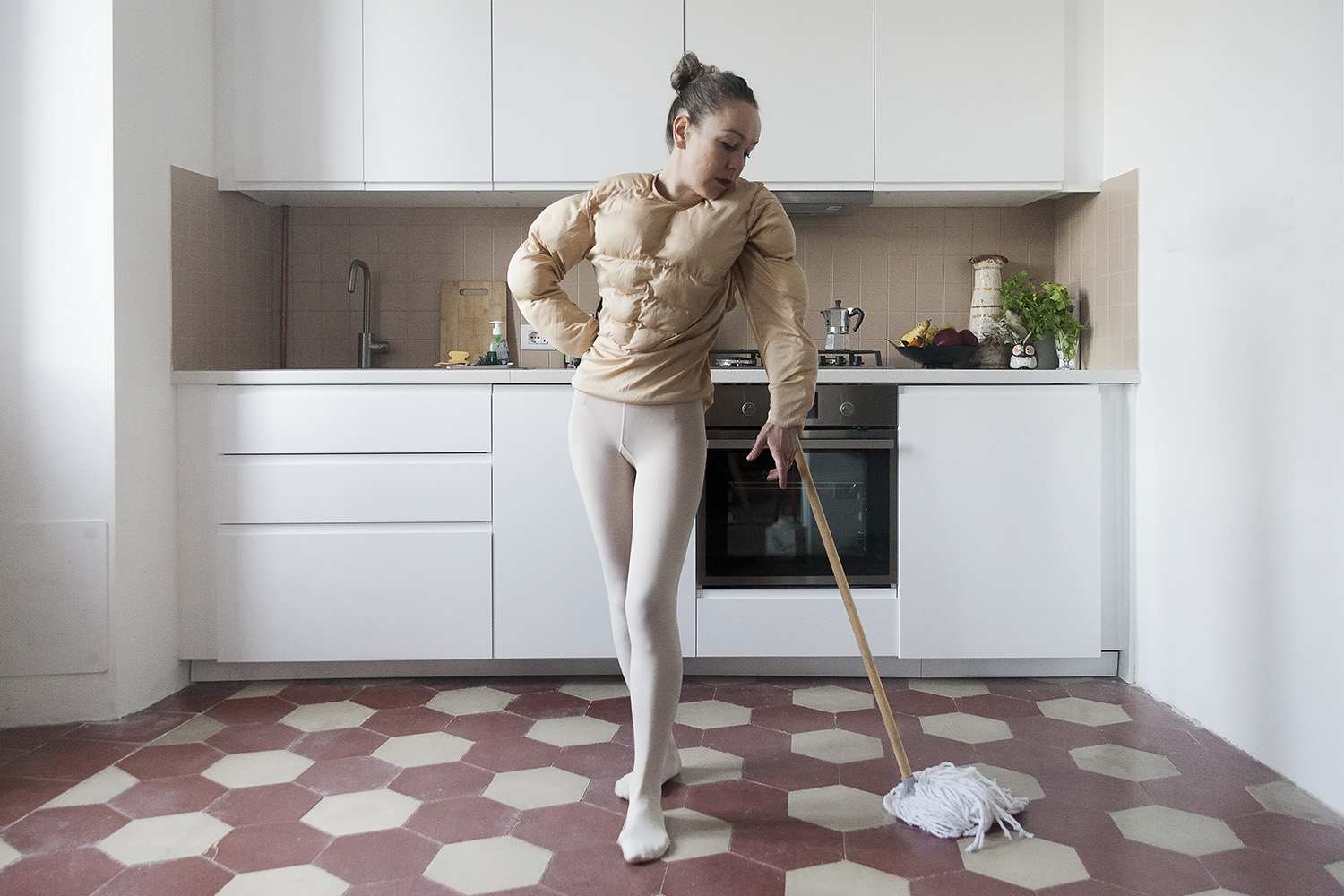In the 1920s, textile artist and Bauhaus educator Anni Albers described weaving as a way to “regain sensitivity toward textile surfaces.” That artistic sensitivity is immensely revitalized in Ann Cathrin November Høibo’s exhibition “Hvis verden spør, så er svaret nei” (If the world asks, the answer is no). On the back wall of the first gallery one encounters four large handwoven panels: Hvis verden spør, så er svaret nei #1 (2020), abstract tapestries (with the exception of two smiling emojis) of woven gray fractured by bursts of zesty orange, creamy pink, yellow, black, and intense blue. Tulle — shiny, light, and hard — is interlaced with viscose-like rayon and a softer cotton and wool. The wool, as the artist herself writes, is of Norwegian spærsau or “Old Norwegian Short-Tail Landrace,” a material characterized by having two layers: an outer glossy wool that protects the inner parts against water and rain, and an underlying layer that keeps the sheep warm. Like the profound Bauhaus weavers, Høibo experiments with material interactions, revealing the range and technical complexity of the medium. The crossing of threads in loosely woven warps conveys the tactile sensations of softness and sharpness, but also lends the work a perceptual effect — a sense of touch. In Hvis verden spør, så er svaret nei #1, the central concern with fabrics rests not on the traditional properties of weaving but on the viscerally evocative potential of interlaced materials.
Significantly, there are three small green lamps with pretty glass shades hung low in a straight line in the second gallery. They typify a 1970s cozy cabin style, bolstered by the brown-tiled gallery floor and two smaller tapestries: Hvis verden spør, så er svaret nei #2 (2020) and #3 (2019). These elements make for a homely and relaxing atmosphere, like sitting in your grandmother’s cabin. For Høibo, the lamps, titled Hvis verden spør, så er svaret nei #4 (2019), are not artworks as such; they are simply meant to serve as lamps. Yet they notably indicate the space as a “media atmosphere,” a concept coined by art historian Ina Blom to demonstrate how artists play with everyday sensorial environments through intimate integrations of bodies and media technologies. In the 1990s and early 2000s, she notes, various types of lamp works became a means through which artists — Dominique Gonzalez-Foerster and Philippe Parreno, for example — produced environments and networks of bodily and technological connections. Høibo’s lamps continue to initiate such aesthetic procedures, actively producing an intimate yet strange domestic environment sustained by electronic signals and circuits, playfully demolishing the boundary between art and life.
Hvis verden spør, så er svaret nei #2 and #3, the smaller handwoven works with purple, yellow, gray, skin-toned beige, and brown threads amid almost-white nuances, are a part of the media atmosphere too. The various wool, nylon, and cotton warps of these fantastic works, installed close to the lamps, suggest movement and change within pale, human-skin-like surfaces. Høibo’s tapestries and lamps elegantly convey a range of sensations and energies embodied by all phenomena on earth, including the operations of the senses, cognition, materiality, and both the highest and “simplest” forms of technology. “Hvis verden spør, så er svaret nei” is a tactile world in which sensory modalities affectively fluctuate in-between natural and artificial materials, media, and bodies.

